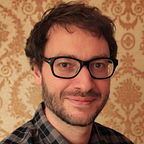The yin and yang of product development
For those who design and build products, it’s sometimes easy to get stuck in viewing our products merely as a sum of their features. This view can disconnect us from the real reasons customers want the product in the first place, and can result in overly-complex feature sets that don’t fulfil real-world needs.
There are two lenses through which we can look at our products that can help reconnect us with their core purpose.
Products as problem solutions
Instagram’s Kevin Systrom recommends always asking what real-world problems your product is solving. Instagram was built with three problems in mind: making mobile photos beautiful, solving the issue of sharing across multiple networks and slow upload times.
This problem-oriented view is quite common in the tech community. It’s often said that computer science itself is really all about problem solving. Interestingly this is sometimes said about design too.
Noticing problems in your own or other people’s lives is a powerful way to find product ideas and a lot of great products were built to scratch an itch of their creator.
The problem-solution viewpoint comes naturally to those with an engineering background but can sometimes lead to a peculiar way of seeing the world. Take for example the post-humanist Nick Bostrom, who sees death as one of humanity’s biggest problems we should be working to solve. Always viewing life as full of problems to be solved could arguably be hazardous to your mental health!
Products as means to outcomes
Another way to view products is as means to outcomes.
If you ask an Instagram user why they use the product they probably won’t mention any of the problems Systrom talks about. Instead they’re likely to talk about feelings of connectedness to friends, sharing photos as a creative outlet, finding inspiration in the window into other people lives and other nebulous outcomes. The outcomes of products are sometimes non-obvious, difficult to articulate and hard to see if you don’t use the product.
One of the best ways to explore the outcome-oriented view of products is Anthony Ulwick’s fascinating Jobs-To-Be-Done methodology. This looks for the reasons customers use products at a deeper level than customers can sometimes explain themselves.
The outcomes-driven viewpoint can be used dig deep into a product’s appeal but also may also be difficult to apply.
To me both ways of seeing our products are complementary and it’s useful to have an awareness of both to guide us through design and development.
The problem-solving lens is at its core about reducing downsides and the outcomes lens is mostly about increasing upsides - together they the yin and yang of what products are about.
